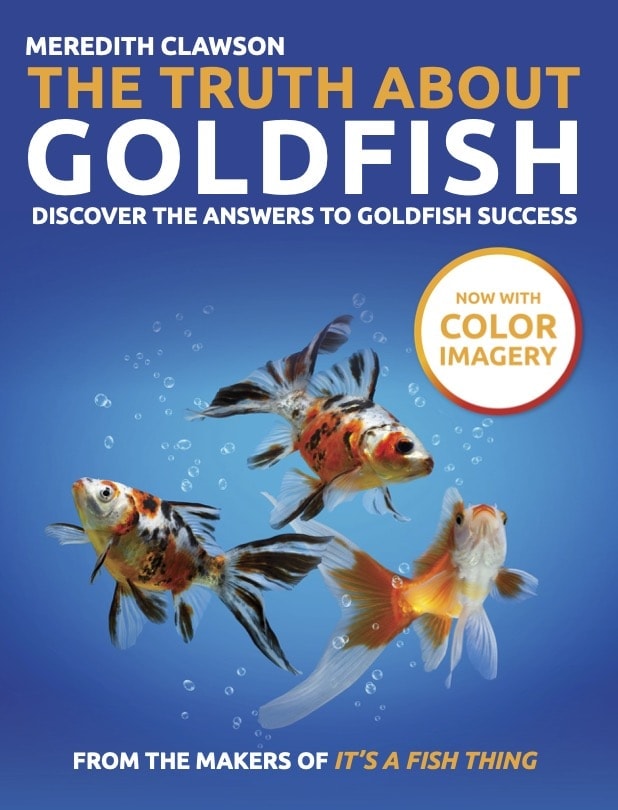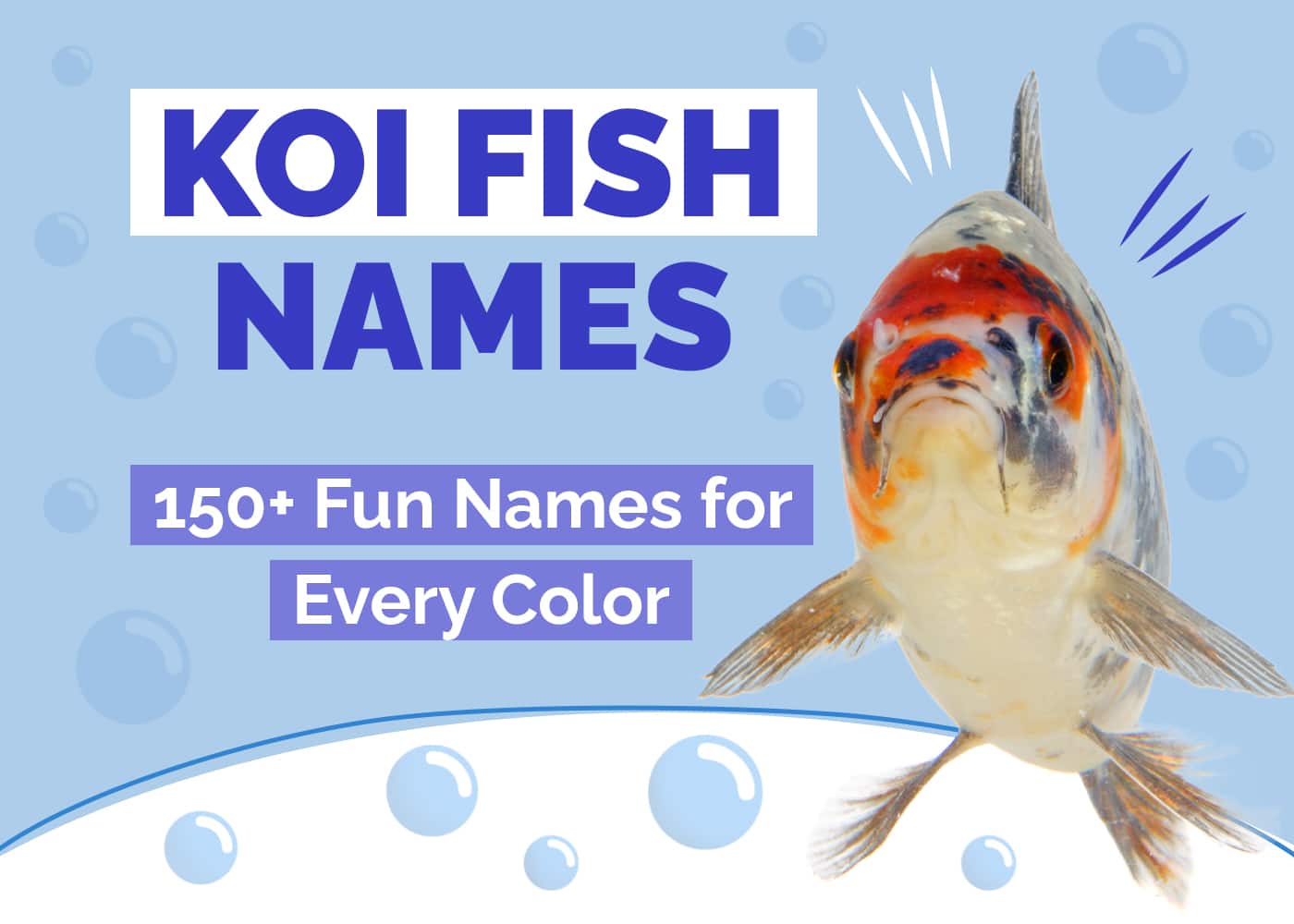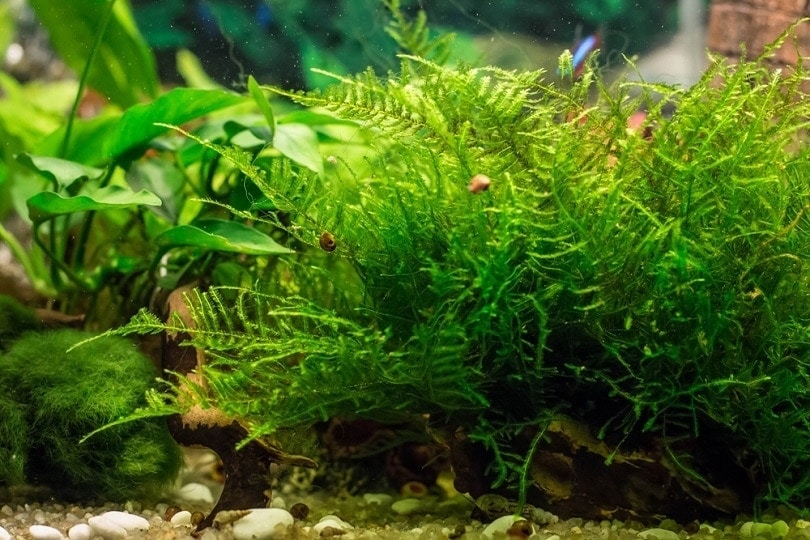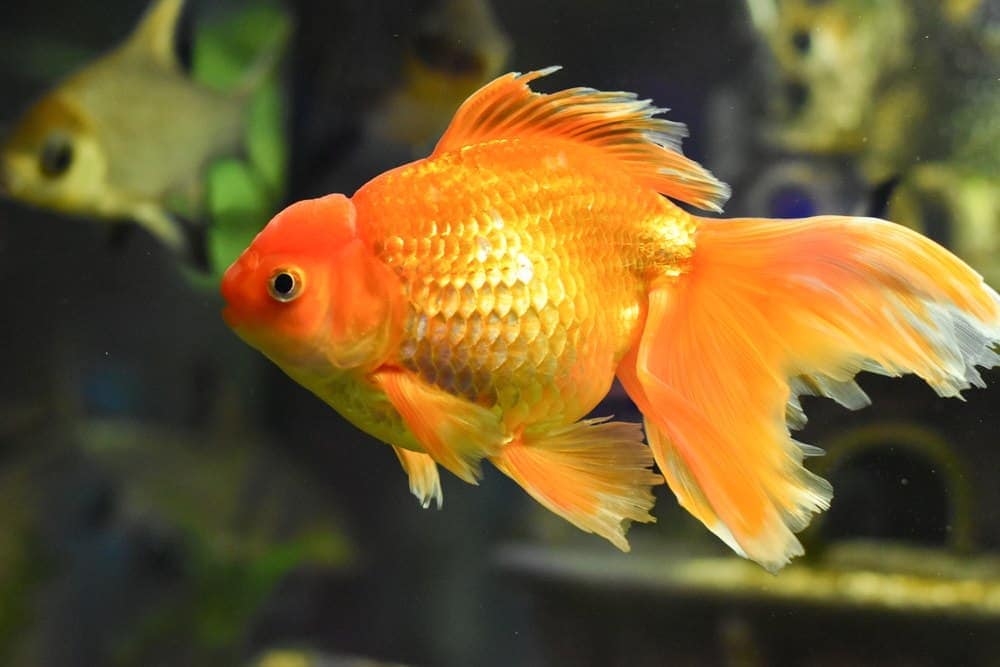Ideal Water Parameters for Goldfish: 5 Vet-Approved Measurements You Need to Know!

Updated on
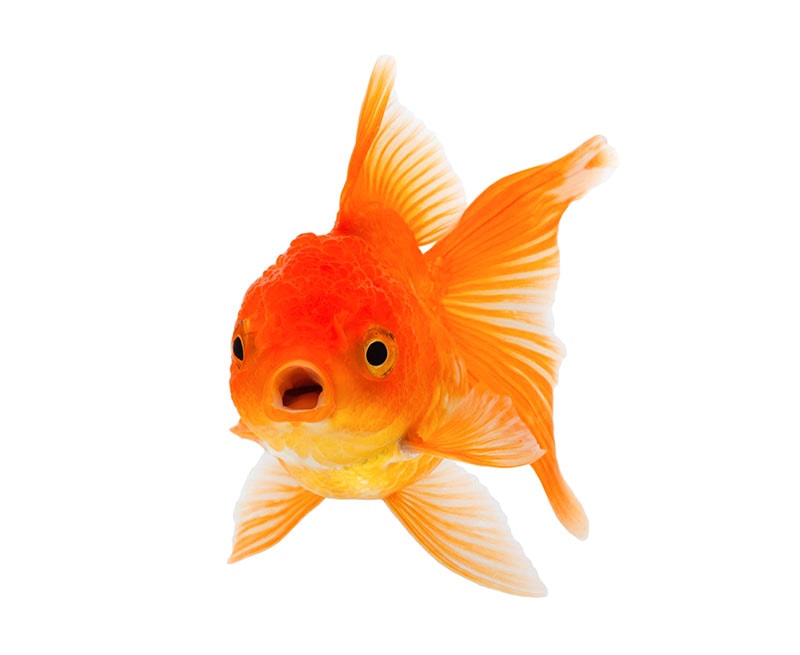
If you want healthy, happy fish, their water has to be suitable for the species you are keeping, and goldfish definitely have their own set of needs for them to thrive. What exactly are they? Let’s discuss the key water parameters for goldfish and how you can ensure your goldfish are housed in ideal conditions. After all, who doesn’t want their pets to thrive?
Testing Your Water
The simplest way to get a beat on your aquarium’s water is with a testing kit. Here is a quick overview of what your levels should look like, but we’ll get into more detail below.
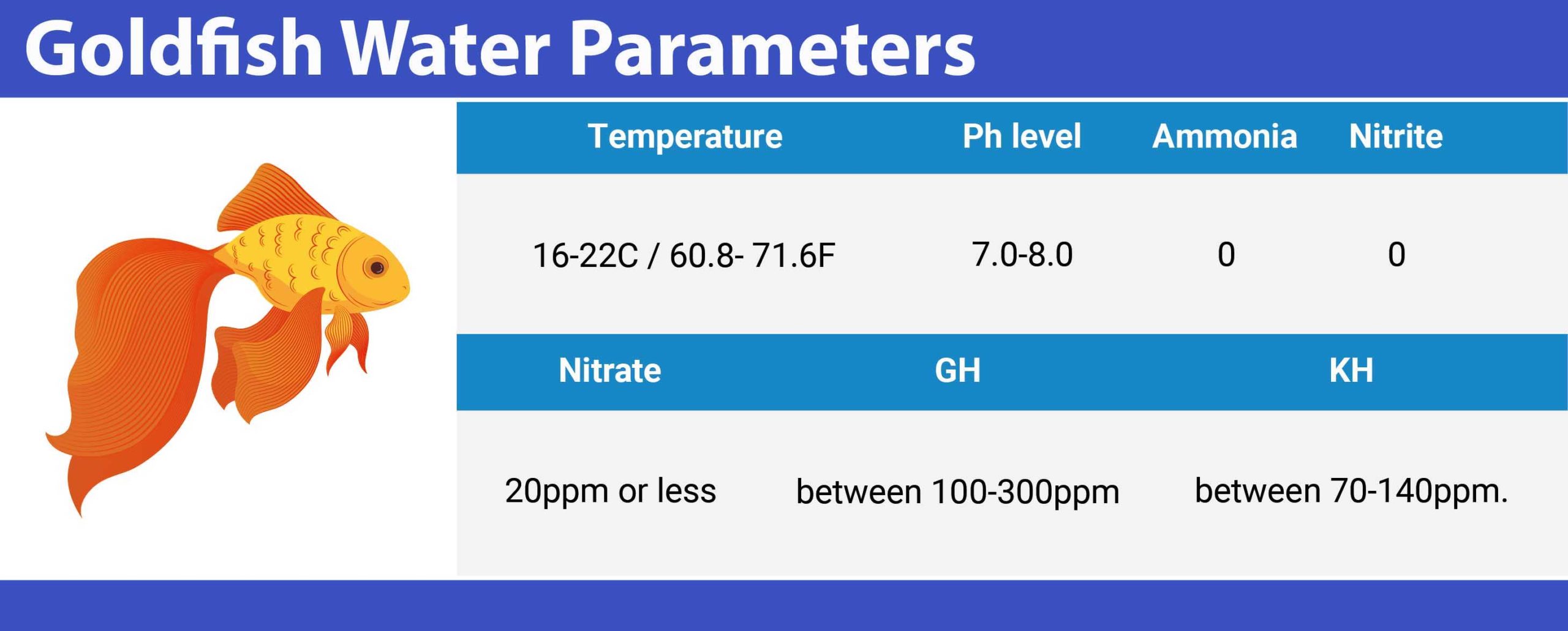
- Ammonia
- Nitrite
- Nitrate
- pH
- Temperature
You can use a liquid kit or a dip strip test. A submersible thermometer is required to test the temperature of your water.
The 5 Essential Water Parameters to Test
1. Ammonia
Importance:
Ammonia is a waste by-product of goldfish respiration and poop. It is extremely toxic for fish.
What it should test:
Your ammonia reading should always be at 0. Any amount greater than that can poison your fish. In a cycled tank with sufficient filtration, ammonia should only be present in unusual situations, like if a fish dies.
- Sudden death
- Erratic swimming patterns (also known as flashing)
- Lethargy
- Poorly coordinated swimming
- Refusal to eat
- Heavy breathing
- Gills appearing red
- Gasping at the surface (also known as piping)
- An uncycled tank (new tank syndrome)
- Insufficient filtration
- An overstocked tank
- Bacterial die-off from overcleaning
- Overfeeding
- A combo of all of the above
- Immediately perform a large water change of around 30-50%.
- Water changes and ammonia tests should be repeatedly performed until ammonia levels are at 0 ppm or 0 mg/L (depending on the kit you use). Depending on the size of your aquarium, you might have to change the water every 4-6 hours in order to keep your fish safe.
- Stop feeding your fish temporarily.
- If your tank is overstocked, consider reducing the stock size by moving some fish to another tank. Alternatively, switch to a larger tank.
- Heavily oxygenate the water using air stones and powerful filtration.
- If your tank’s pH is alkaline (over 7.0), use a product to bring it as close to 7.0 as possible.
- Add commercial ammonia binders, aquarium salt, and nitrifying bacteria. Follow dosing instructions on the product labels. Some products might require carbon filtration to remove them from your aquarium. Activated carbon can be added to most filtration systems to do so.
- Contact your aquatic veterinarian for any secondary issues or diseases that occur due to the poisoning.

2. Nitrite
Importance:
Nitrite is also toxic for fish. It is the result of bacteria turning ammonia into nitrite. It can cause brown blood disease in goldfish, along with other damage to the gills and skin.
What it should test:
Nitrite should also remain at 0 in the goldfish tank. Higher than that can cause health issues and even death to the fish.
Many of the signs are also similar to those of ammonia poisoning. However, with nitrite poisoning, you might also notice the following:
- All ammonia poisoning signs
- Heavy breathing or rapid gill movements
- Fish tend to gather near the filter
- Gills may appear pale or brown
- Same as ammonia poisoning
- Same protocol as that for ammonia poisoning.
- Aquarium salt is very useful for nitrite poisoning.
- Bacteria cultures added to the aquarium for nitrite poisoning should include Nitrosomonas (these also metabolize ammonia well) and Nitrobacter strains (these are particularly efficient at metabolizing nitrite).
If you need help getting the water quality in your aquarium just right for your goldfish family, or just want to learn more on the subject (and more!), we recommend that you check out our best-selling book, The Truth About Goldfish.
It covers everything from water conditioners to nitrates/nitrites to tank maintenance and full access to our essential fishkeeping medicine cabinet!
3. Nitrate
Importance:
Nitrate is far less toxic than ammonia or nitrite. When you see nitrates, your cycle is near to or fully completed.
What it should test:
For goldfish, it is recommended to keep nitrate levels at 20 ppm or under. It is best that they remain under 10 ppm. Please note that the EPA does not recommend water with nitrates over 10 ppm. If your tap water has nitrates greater than 10 ppm, you should not use it.
- Buoyancy issues
- Bulging veins
- Appetite loss
- Lethargy
- Incomplete denitrification and not enough water changes
- Overfeeding
- Perform several small water changes (25% daily) to gradually reduce nitrate.
- Add live plants to the tank.

4. pH
Importance:
The pH measures how acidic or alkaline the aquarium’s water is. A pH of 7 is considered neutral.
What it should test:
Goldfish generally do best at a pH between 7-8.
- Gasping and/or hanging at the top of the water
- Reduced activity or lethargy
- Suppressed appetite
- Excess slime production
- Slime coat shedding
- Death
- Nothing to stabilize the pH in aquarium combined with no water changes
- Low or high from the tap water source
- Distilled water
- Perform water changes (if your source is fine).
- Consider pH adjusters if necessary – always consult an aquatic vet before doing so.
- Do not use distilled water unless it is remineralized.
5. Temperature
Importance:
Goldfish are coldwater fish and have an ideal temperature range as well as an optimum temperature.
What it should test:
The acceptable temperature range for goldfish, whether they’re kept indoors or outdoors, is 16–22°C (60.8 – 71.6°F). Fancy Goldfish have lower tolerances to changes in temperature and should be kept at 20–23°C (68–74°F). Their optimal temperature for growth, immunity, and reproduction is between 20 °C (68 °F) and 22 °C (72 °F).
- Fish will appear restless and overly active (if too hot)
- Fish will be lethargic and may not eat (if too cold)
- Fish may die (if temperature changes suddenly)
- Sudden changes in ambient temperature
- Replacement water (after a water change) is too warm or cold
- A small aquarium’s temperature fluctuates more quickly than a large aquarium’s
- Use either a chiller/fan or an aquarium heater to adjust the temperature to a desirable level. Please note that you should not change the water’s temperature by more than 1 or 2 °C (1.8 – 3.6 °F) per day. A sudden change may inadvertently shock and stress your fish. Gradual changes in temperature are advised for your fish’s safety. It is best to adjust the temperature by 1 °C (1.8 °F) every 12 hours until you reach the desired temperature.
Wrapping Up
Though there are many water tests you can perform on a goldfish’s tank, and a few of them are very important to closely monitor. In this article, we’ve summarized the five key parameters you should keep in mind when caring for goldfish. When you hit all the right numbers, all your goldfish should thrive.
Featured Image Credit: panpilai paipa, Shutterstock



